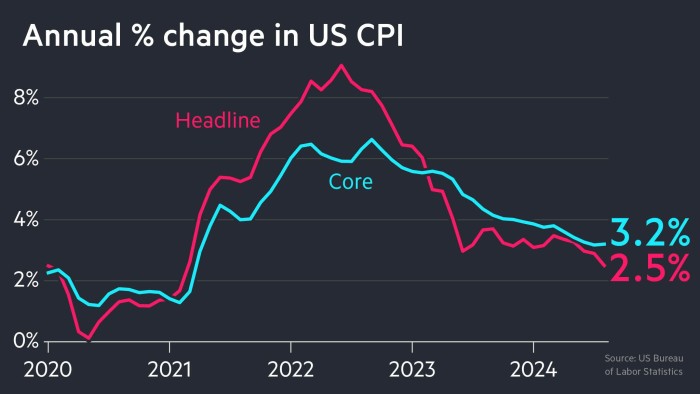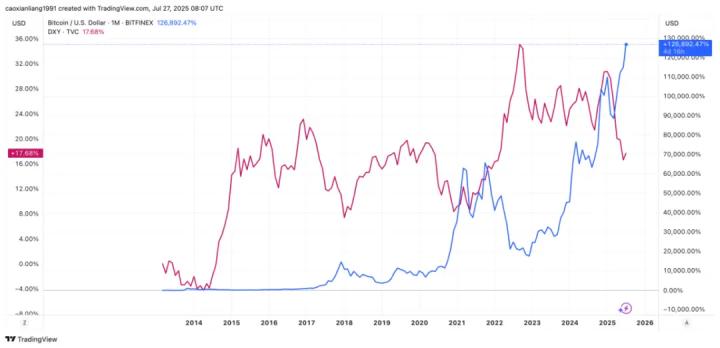In July in Washington, the heat is stifling, but the tense atmosphere in the political and financial spheres is even more suffocating than the weather.
"I believe the Federal Reserve must cut rates this week."
On the eve of the Federal Open Market Committee (FOMC) rate decision, Donald Trump once again brought his disagreement with Federal Reserve Chairman Jerome Powell into the global spotlight without reservation. This is not the first time he has "fired" at the central bank head he personally nominated, but this time the wording - "must" - has elevated the intensity of his statement to an unprecedented level.
This almost commanding attitude has transformed what should have been a cautious decision based on complex macroeconomic data into a battle of wills. The nerves of global markets are once again being plucked, and people cannot help but wonder: Will Trump's desired "immediate rate cut" actually happen? If not, what resistance stands between this former president's will and current monetary policy?
To answer this question, we cannot simply remain in the political clamor, but must, like Federal Reserve officials, enter that decision-making room built by cold data and historical lessons.
Visible Resistance: Three Economic "Data Mountains"
The Federal Reserve's decisions, especially adjustments to such a "big weapon" as interest rates, are not arbitrary but strictly anchored to its two core missions: maintaining price stability and promoting maximum employment. Currently, at least three "data mountains" from the macroeconomic landscape prevent Powell and his colleagues from easily pressing the "rate cut" button, collectively forming a thick "data wall".
The first mountain is the "inflation tiger" that has not yet been fully tamed. After two years of fierce struggle, the Federal Reserve successfully pulled runaway inflation back from decades-high peaks through a series of aggressive rate hikes. However, "success" does not equal "victory". The inflation indicator most valued by the Federal Reserve - the Core Personal Consumption Expenditures (PCE) price index - remains around 2.8% year-on-year, similar to the more well-known Consumer Price Index (CPI). Both figures are significantly higher than the Fed's 2% policy line.

To use an analogy, the economic body's fever has dropped from 40 degrees to 38 degrees, but is still far from the healthy 37 degrees. In this situation, rashly stopping the "rate hike" medication or even reversing to "nourish" (rate cuts) could likely cause the fever to return. Federal Reserve Governor Michelle Bowman has repeatedly warned that prematurely declaring victory and relaxing policy could cause inflation expectations to "de-anchor" again, and when that happens, pulling it back on track would require an even more painful social cost. This caution stems from the blood and tears lessons learned from the "Great Stagflation" of the 1970s.
The second mountain is an employment "Great Wall" that appears solid but harbors hidden cracks. On the surface, the U.S. job market remains strong. An unemployment rate below 4% is historically low, seemingly indicating that the economic engine is fully powered and far from needing a "fuel boost" through rate cuts.
However, a closer look at the wall's brick seams reveals some unsettling signs. Recent non-farm employment reports show that new job creation momentum is slowing and increasingly concentrated in government sectors and a few industries, with private sector job creation showing fatigue. Simultaneously, the ratio of job openings to job seekers (JOLTS data) continues to decline. This creates the root of internal disagreement at the Federal Reserve: some officials believe a "preventive" reinforcement should be made before clear gaps appear in the wall, i.e., rate cuts; while others insist that any action is premature without undeniable signals of deterioration. This contradictory state of "seemingly strong, actually weakening" makes the decision-making scale difficult to tip.

The third mountain is the recently stabilized "GDP ballast". After experiencing early slowdown concerns, the U.S. economy has shown certain resilience. While recent GDP data is not impressive, it has not slid into a recession. As long as the economy continues to grow, even if slowly, it provides the most direct reason for the Federal Reserve to "stay put". Why risk stirring up inflation waves by adjusting course when the ship can still sail smoothly?
These three mountains collectively form the decision-making basis that Powell repeatedly emphasizes - "Data Dependent". Before data clearly indicates controlled inflation and clear economic recession risks, any rate cut decision lacks sufficient legitimacy.
Invisible Resistance: The Central Bank's "Independence" Demon
If economic data represents obstacles on the surface, a deeper and more subtle resistance is rooted in the Federal Reserve's institutional soul - independence.
One of the core cornerstones of the modern central banking system is its independence from the administrative branch. This ensures monetary policy is formulated based on long-term economic welfare, not serving short-term political election cycles. Trump's public, high-profile, and even threatening pressure precisely touches this most sensitive nerve.
History is a mirror. In the 1970s, then-U.S. President Nixon successfully pressured Federal Reserve Chairman Arthur Burns to adopt a loose monetary policy before the election. The result was an economy that seemed prosperous in the short term, paving the way for Nixon's re-election, but ultimately planting the seeds for a subsequent decade of "Great Stagflation" (high inflation, high unemployment, low growth). This inglorious history is the Sword of Damocles hanging over every Federal Reserve chairman.
With such a precedent, the Federal Reserve under Powell will naturally be especially wary of pressure from the political realm. Surrendering to Trump's demands at this moment would be tantamount to announcing to global markets that the Federal Reserve's decisions can be hijacked by political interests. In the long term, this would severely damage its credibility as a neutral, professional institution, and the harm to the U.S. dollar's global status and the U.S. economy could be far greater than one or two incorrect rate decisions. Therefore, to some extent, the louder Trump's shouting, the more likely the Federal Reserve is to choose to "stay put" to defend its remaining credibility.
Rate Cut Game: The Butterfly Effect in the Crypto World
This macroeconomic game playing out in Washington is far from a distant spectator sport for the seemingly remote crypto world. On the contrary, every hint and argument about interest rates triggers a dramatic butterfly effect in the crypto market.
From the most direct logical perspective, rate cut cycles are usually seen as positive for crypto assets. It means more dollars will circulate in the market, financing costs will decrease, and investors will be more willing to shift funds from low-yield traditional financial products to high-risk, high-return asset classes, with Bitcoin and Ethereum undoubtedly ranking among them.
However, the deeper impact lies hidden in the unique structure of the crypto world. Stablecoin issuers, such as Tether (USDT) and Circle (USDC), are whales buying U.S. Treasury bonds. Statistics show that these two companies alone hold over $150 billion in short-term U.S. Treasury bonds. The interest from these bonds is a crucial profit source for their business model. Once the Federal Reserve opens a rate-cutting channel, the yields of these reserve assets will directly decline, thereby squeezing the profit margins of stablecoin issuers. This seemingly minor change could potentially have far-reaching effects on the underlying asset yields (Real World Asset, RWA) of the entire DeFi world through transmission.
Arthur Hayes, a thought leader in the crypto world and founder of BitMEX, has proposed a bolder and more disruptive narrative. He believes the key issue may not be the Federal Reserve itself, but the U.S. Treasury's debt issuance. Against the backdrop of continuously expanding U.S. government debt, the Treasury needs to finance massive deficits, which is a form of liquidity injection, regardless of whether the Federal Reserve cuts rates.
In this grand narrative, crypto assets, especially Bitcoin, play a role in hedging against the credit risks of the fiat currency system. When the government stimulates the economy through large-scale bond issuance, it effectively dilutes the purchasing power of legal tender, while Bitcoin with its fixed total supply becomes a "digital gold" for value storage. From this perspective, as long as the U.S. government's fiscal discipline cannot be constrained, the "flood" flowing into the crypto world will not stop, regardless of this week's rate cut.
Moreover, an undeniable trend is the crypto industry's rapidly rising political influence in the United States. Political donations and lobbying activities from industry participants are unprecedented, with increasingly crypto-friendly voices emerging within both parties. Pantera Capital also noted in its recent report "Escape Velocity" that the crypto industry is experiencing a profound political shift. This means that future monetary policies and financial regulations will have to consider the influence of this emerging field.
Conclusion
Returning to the original question: Trump's desired rate cut faces significant resistance. Before him are the seemingly immovable "data walls" of inflation, employment, and GDP, and behind him is the Federal Reserve's resolute "independence" defense line. This week, we will likely see Trump's political roar collide with Powell's calm and solid professional barrier.
However, for the crypto market, this may only be the prelude to a larger drama. The real variable might not be this rate decision itself, but the future it reveals, shaped by political intentions, fiscal deficits, technological innovation, and macroeconomic cycles. Regardless of Washington's game result, a more massive and unpredictable macroeconomic wave seems to be brewing. For every crypto participant, understanding the causes and direction of this wave is far more important than guessing a single rate movement.






